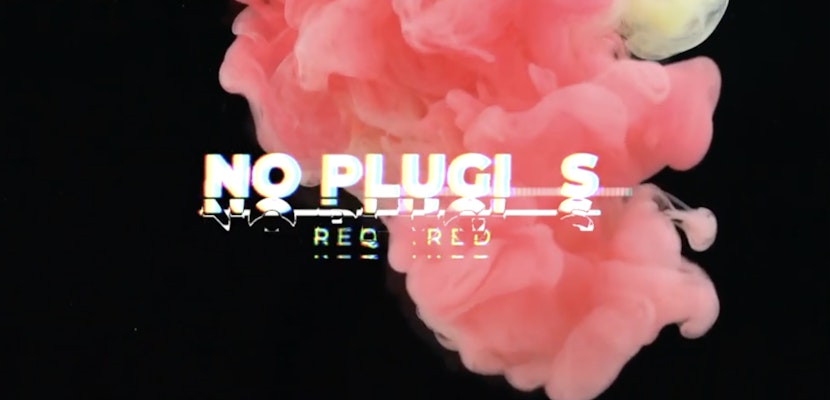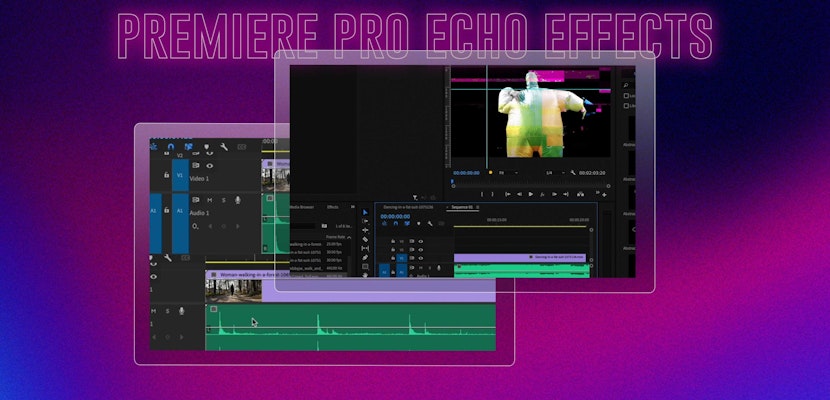One of the most popular tips for increasing the engagement of your YouTube channel videos is creating a video card to show footage while other footage is also playing underneath. This is also called the picture-in-picture (PiP) effect. Let’s walk through a more stylized version of this effect which is really easy to do!
Summary
How to Make a Picture in Picture Effect in Premiere Pro
Step 1: Create a Footage Card
Let’s assume you have a video of a person talking. The goal for this effect is to include a small frame of picture or video within the clip, similar to a news broadcast. Here are the steps to create this footage card:
- If the shot has the person in the center of the screen, you’ll want to adjust the position, so the speaker is left of center. You can do this from the Effects Control panel using Scale and Position.
- Next, introduce the shot that you want to make the footage card out of. Place it 2 layers above your original footage in the timeline.
- From there, resize the image from the Effects Control panel to make it small enough to position in the right-hand corner. It’s recommended to reduce the size by about 35-40%. This will help you have a little buffer room around the footage card.
- Using the Position sliders, you can alter where you want the footage to be.
- You can now edit the clip to ensure that the correct part of the video is used.
Step 2: Add a Colored Border
Now that this point, you’ve achieved the picture-in-picture effect, but there are a few additional items you can do to improve how professional it looks. Since you want the footage card to be distinct from the underlying video, you could add a solid rectangular box behind or underneath the footage card. Here’s how to do this:
- Our favorite way to do this is to create a Text layer. Ensure it’s between the 2 footage layers in your timeline.
- Be sure that this new text layer extends for the full duration of your footage card clip.
- Go to the Essential Graphics panel, and then delete the text inside it. You should now have an empty graphics box.
- Click on the Page icon, and add a new rectangle, which will then display on the screen.
- From there, resize the box to be slightly bigger than your footage card. This will start to look like a small border.
- If you want to change the color of the box, that can also be done in the Essential Graphics panel.
Step 3: Nest Your Clips into a Single Unit
What if you need to animate the clips, such as fade in and fade out? You’ll find that you’ll need to do the same thing for the border to make it look right. Here’s how to nest your footage, so you only need to adjust the border once:
- For the border and footage act as a single unit, nest your clips.
- Highlight both of your clips, right-click select Nest, and give it a name. This ensures that whenever the footage and border will always work together.
- Now if you add an animation so that it grows and pops into the frame, it will work with the border around it.
- To do this, bring the size to 0, keyframe it, and bring it back up to the size of 102, just a little bigger than the original.
- Then, add a few more keyframes alternating in size, getting closer and closer to the original size.
- And finally, highlight all the keyframes and right-click, then select Bezier.
Optional Step: Bring to Full Screen
Once you have your picture-in-picture effect, you might want to add an additional full-screen effect so that the smaller screen will fill the whole screen and then you can scale it back down.
- Make a Color Matte element using the same resolution and default to five seconds in length.
- Using keyframes, move it back to the position you want. Add in 2 keyframes for Size and Position at the beginning.
- Copy and paste the Size and Position keyframes to the end and reverse their order.
- Set any Easy In or Easy Out setting you desire.
- You can save it as a preset by clicking on the Effect Controls menu > Save Preset.
Now you know how to add a modern picture in picture effect in Premiere Pro! It’s a really easy effect to pull off and makes whatever you’re talking about look stylish. Do you have any questions? Let us know in the comments below.
There are several additional effects you can create in Premiere Pro, such as Ken Burns, Gaussian Blur, Cinematic, and Glitch. You can also up your editing by learning how to create freeze frames!



























